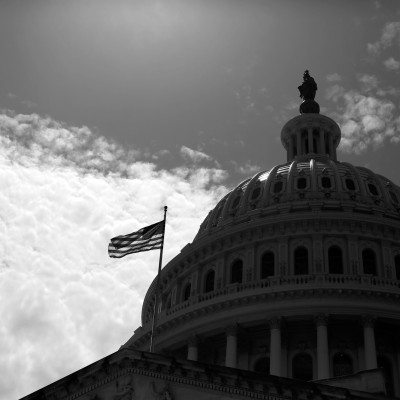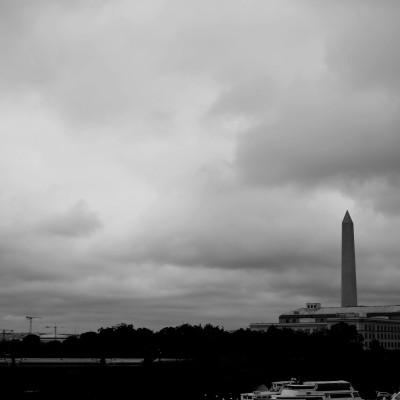
Telling Your Story On Capitol Hill
 Daniel Ritz, NFS Northern Oregon Coordinator, with Congresswoman Dexter of Oregon's 3rd District. Pictured, from left to right: Matty Otepka (Farbank), Paul Bailey, Congresswoman Dexter (D-OR), Daniel Ritz, Brian Bennett (AFFTA, Wild Steelhead Coalition) and Rachael Dewitt (Ocean Conservancy). Photo: Snoqualamie River Steward Dave McCoy.
Daniel Ritz, NFS Northern Oregon Coordinator, with Congresswoman Dexter of Oregon's 3rd District. Pictured, from left to right: Matty Otepka (Farbank), Paul Bailey, Congresswoman Dexter (D-OR), Daniel Ritz, Brian Bennett (AFFTA, Wild Steelhead Coalition) and Rachael Dewitt (Ocean Conservancy). Photo: Snoqualamie River Steward Dave McCoy.

Last week, NFS Northern Oregon Coordinator Daniel Ritz was in Washington DC advocating in defense of NOAA. Learn why, and how to make your voice heard from here, to The Hill.
Last week, May 19-21, 2025, NFS joined an unprecedented group of members of the fly fishing industry (manufacturers and retailers), culinary and education sectors, and partner wild fish conservation organizations, for a few days on Capitol Hill in Washington D.C.
Organized by the Ocean Conservancy, this fly-in was an opportunity to share NFS and our supporters' defense of the National Oceanic and Atmospheric Administration (NOAA), and advocate for sustainable, climate resilient federal fisheries management.
Over the course of two full days, I was honored to spend time with staff in the offices of:
Senator Ron Wyden (D-OR)
Senate Appropriations Committee staff
Senator Murray (WA)
Senate Commerce Committee staff
Senator Merkley (D-OR)
Congresswoman Jayapal (WA-07)
Congressman Smith (WA-09)
Congresswoman Dexter (OR-03)
House Natural Resources Committee staff
Congresswoman Glusenkamp Perez (WA-03)
By now, you might be wondering, why is Native Fish Society’s Northern Oregon Coordinator lobbying Congress? Let’s make it a bit more local.
What This Means for Oregonians
The ocean is critical for Oregon's economy, culture, and well being. Over 690,600 coastal residents live in Oregon, all of whom benefit from the National Oceanic and Atmospheric Administration (NOAA). Products and services from NOAA power industries that make up more than one-third of America's GDP.
The federal government could be called a rose bush, to say the least, with its positives and its obvious thorns. Advocacy of all kinds begins with personal experience, and believe it or not, there is no better place to share your individual, personal story, than with the folks walking the halls of Congress.
They are all lawyers, career politicians, or worse, and that is exactly the point. They are not on the rivers each day. They don’t have their hands in the dirt, their boots on the ground.
Who else has a connection to and understands the needs for federal protections for the 10 listed endangered fish species (including 5 salmon and trout) off the coast of, and in Oregon’s waters? Who better to remind Congress that we the people would prefer to see our tax dollars invested as a part of a progressive “ounce of prevention” strategy, as opposed to paying the expensive costs of a pound of recovery?
You do. We do.
Your experience is not a point that can be argued. If the folks in D.C. don’t know what’s happening here in northern Oregon, it’s difficult to imagine they will know how to shape a world destined to meet our needs, and desires.
So, for two days, notes were taken as stories were shared, and more than a few were heard in comments from the northwest delegation in their testimony in the days following our meetings.
We told them about how NOAA’s data provides a backstop against continued decline and accountability for the progress that CAN and is being made when we divest in harmful practices and invest in nature. We shared how our River Steward, Fellow and volunteer programs proudly give of themselves to ensure that habitats are protected - aquatic AND terrestrial. We talked about how best-available science is the guiding light of our organization, and our supporters.
We spoke about how current Endangered Species Act protections lie in wait while crucial and experienced staff - responsible for reviewing and writing status reviews - are cut. We shared how the Pacific Coastal Salmon Recovery Fund (PCSRF) provides significant funding (almost $250-million since its creation) to the Oregon Watershed Enhancement Board, which provides funding for crucial habitat restoration work like NFS facilitates on the Molalla River. We spoke of our colleagues and partners in Watershed Councils across the state, which could see their funding and therefore ability to manage habitat projects, cut out from underneath them.
Sadly, we also advocated for our partners, the thought leaders and colleagues that are a part of the purge of NOAA staffing, which has already begun with a number of Oregon-based scientists lying in wait to find out their jobs have been cut. Nationally, of their original 12,000 staff, NOAA is already down to nearly 10,000, likely to go see thousands more fired in the coming weeks.
A more than 25% cut.
Are federal fisheries managed perfectly? No. Are habitats protected like they should be? Not always. Are the impacts on fish populations nuanced and complicated? A resounding yes.
But, let’s not forget, NOAA is responsible for contributing what we DO know, and why we ARE the world’s leader in fisheries management. If we are a democracy currently fixated on value and return-on-investment, NOAA’s budget in FY25 was $6.6 billion, and federal fisheries returned more than $300-billion dollars to the U.S. economy, and supported more than 2.3-million jobs (Sources: NOAA. 2024-2025 California Current Ecosystem Status Report & Fisheries Economics of the United States (FEUS) 2022.).
Yet, the administration is proposing drastic cuts to NOAA. A recently leaked draft "passback memo" from the Office of Management and Budget to NOAA providing guidance on an interim draft of the FY26 Budget proposes a 30% reduction in NOAA’s budget for Operations, Research and Facilities. These cuts would eliminate critical systems and programs, threatening public health and safety, decimating tourism, and hurting local economies and seafood markets. And while the leaked memo is in reference to FY26, these same cuts may be implemented early in FY25, meaning American businesses and communities could lose these programs imminently.
These cuts, if implemented, would have far-reaching impacts. Broadly, cuts would:
Threaten public health and safety, for example by stopping research foundational to producing weather and extreme event forecasts.
Hurt local economies by ending funding that supports coastal communities, state fisheries, and seafood growers.
Increase risk for coastal communities and wildlife by eliminating programs that protect and restore coastal habitats that support fish and protect people from storms and floods.
Blind us to ocean and atmospheric conditions, by ending data and research programs that advance our understanding of weather, climate, and the ocean to continually maintain and improve the services that NOAA provides.
Further dismantle NOAA, the nation’s premier agency tasked with producing ocean, climate, and weather science and services and managing coastal and marine resources.
These cuts would come on top of already disruptive reductions in services and capacity due to significant staff reductions, cuts in contracts, grants and cooperative agreements, and critical delays in routine management of our nation’s fisheries. Congress must restore NOAA’s programs and services to support a thriving economy and the wellbeing of Americans.
Already Heard Enough? Take Action By Contacting Your Senator Today
Learn How At The Bottom of This Article
Why NOAA Matters to Anglers
For over 50 years, NOAA has led the way in conserving and managing marine resources through its National Marine Fisheries Service (NMFS) and National Ocean Service (NOS). Their work supports recreational and commercial fishing, coastal ecosystems, and the broader economy that depends on them.
Sustainable Fisheries – NOAA monitors fish stocks, sets science-based catch limits, and restores depleted species to ensure fish populations remain strong.
Healthy Marine Habitat – From restoring wetlands to protecting coral reefs, NOAA safeguards the environments where fish spawn, grow, and migrate.
Ocean and Weather Data – NOAA tracks everything from water temperature, currents, and fish movement, providing crucial insights for anglers and fishery managers.
Enforcement of Conservation Laws – NOAA implements laws like the Magnuson-Stevens Act, preventing overfishing and habitat destruction.
Summary: What’s at Risk?
Both administrative actions and potential fundings cuts are threatening to gut NOAA’s programs, putting fish populations, coastal habitats, and sustainable fisheries at risk. These cuts could:
Slash fishery stock assessments, leading to overfishing and mismanagement.
Undermine habitat restoration projects, harming vital estuaries and spawning grounds.
Weaken enforcement of conservation laws, opening the door to unsustainable practices.
Eliminate crucial climate and ocean research, leaving fishery managers without the data they need to make good decisions.
NOAA’s broader role in Marine Science and Conservation
It isn’t just NOAA Fisheries that anglers and fishery managers need—it’s all of NOAA.
Beyond fisheries, NOAA programs and products directly benefit anglers and coastal communities:
Weather Forecasting & Warnings – Through the National Weather Service (NWS), NOAA provides critical storm warnings that protect boaters and coastal fisheries.
Climate Monitoring & Research – NOAA studies climate patterns, ocean acidification, and rising sea temperatures that impact fish behavior and populations.
Satellite & Data Services – NOAA tracks ocean conditions using environmental satellites, giving real-time updates on changes that affect marine life.
Navigation & Charting – NOAA provides accurate tide charts, navigational maps, and marine safety data for anglers, boaters, and commercial fishermen.
-
Specifically, proposed cuts would result in these serious impacts:
Elimination of the Office of Oceanic and Atmospheric Research (OAR). OAR is one of the five core NOAA “line offices,” and the administration has proposed eliminating it. OAR provides the foundation for timely and accurate forecasts and predictions that are crucial to protecting lives and property, such as tornado warnings in the Great Plains, hurricanes along our coasts, wildfires in the west, and drought across the nation. OAR also conducts an integrated program of research, technology development, and services to improve understanding of global systems and hazards, such as red tides, in the marine and coastal environment that ensures safe seafood and benefits fisheries, aquaculture, and coastal economies, and communities.
Within OAR, there are several specific programs that would be eliminated or defunded. These programs and the impacts of cuts include:
Removing research powerhouses: defunding climate, weather, and ocean laboratories and cooperative institutes, as well as research programs in partnership with universities. Collectively, these programs produce scientific research that advances understanding of ocean circulation, weather systems, and improvements to modeling systems that allow for longer term outlooks for planning and support stabilizing local economies that rely on ocean resources or are impacted by coastal weather events. This will not only slow progress on the delivery of services and products— it undermines the strength of the U.S. as a science leader.
Ending a 50-year-old federal-state partnership program that supports coastal economies and local fisheries and aquaculture: defunding Sea Grant. Sea Grant focuses on maintaining resilient communities and economies, sustainable fisheries and aquaculture, healthy coastal ecosystems, and environmental literacy and workforce development. Sea Grant supports 34 programs in coastal states and the Great Lakes that conduct research, offer trainings, and help communities and businesses plan. Programs offer technical assistance to the public through extension activities on topics such as seafood safety, fishing gear enhancement, and habitat restoration. Each federal dollar invested in Sea Grant yielded $8.81 in economic benefit in 2023 (Calculated from National Sea Grant College Program. 2024. Sea Grant by the Numbers 2023. Available at: https://seagrant.noaa.gov/wp-content/uploads/2024/10/2023-Sea-Grant-By-the-Numbers_10-3- 24_508_web.pdf).
Shuttering a widely used national network providing observations of ocean conditions: Cutting funding to the U.S. Integrated Ocean Observing System (IOOS). IOOS is a national program with regionally distributed ocean observation systems in waters off coastal states and the Great Lakes throughout the U.S. Through 11 regional systems, IOOS supports local economies by ensuring safe coastal transportation and shipping, providing critical information for coastal emergency response, and producing observational data for extreme weather and flood forecasting. These services are used to protect human health from harmful algal blooms, track fish and marine mammal movements, and prepare communities for natural coastal disasters, such as tsunamis. In addition, commercial and recreational fishermen, as well as shellfish growers, use IOOS data to plan and execute safe fishing trips and operations.
Defunding coastal reserves visited by millions of Americans each year: eliminating the National Estuarine Research Reserves (NERRs). These special coastal places around the nation draw millions of tourists annually to local communities, protect 1.4 million acres of wildlife habitat, support major fisheries and local fishing communities and generate millions of dollars in revenue annually. There are 30 NERRs in 23 states and Puerto Rico.
Reducing the Nation’s ability to manage and conserve coastal habitat that supports fisheries and protect coasts from storms and hazards: eliminating funding for NOAA Fisheries’ Office of Habitat Conservation (OHC). This office ensures the conservation of habitats that are important for fisheries and maintaining a healthy ocean. OHC conserves habitats for managed fisheries and protected resources, restores fisheries and protected resources impacted by oil and chemical spills, and increases resilience of coastal ecosystems, communities, and economies. Much of this work involves working with state and local partners to get boots on the ground for habitat restoration. Since 1992, the office has provided more than $750 million to implement more than 3,300 coastal habitat restoration projects, which support fish, wildlife, and fisheries.
Failing to meet obligations to manage iconic Pacific salmon: defunding the Pacific Coastal Salmon Recovery Fund (PCSRF). The PCSRF was established by Congress in 2000 and provides funds to states and Tribes (with a state match requirement) to protect and restore salmon and steelhead populations. These fish support West Coast and Alaska salmon fisheries and provide forage for other endangered species, such as the Southern Resident Killer Whale. Salmon and steelhead are important to food security and culture for Alaska Natives and Native American Tribes, and recovery is necessary to meet federal obligations in honoring Tribal treaty rights and fulfilling trust responsibilities. PCSRF has funded nearly 16,000 salmon recovery projects, restored nearly 1.2 million acres of spawning and rearing habitat, and provided fish access to more than 12,000 miles of previously inaccessible streams.
Cutting off state-led research to improve fisheries: Eliminating Interjurisdictional Fisheries Grants. These grants, awarded under the Interjurisdictional Fisheries Act, funded fish projects in 38 coastal states and U.S. territories in recent years. These projects are driven by the priorities of local managers and are essential for state and interstate management of fisheries, including nearshore fish species. Past examples of projects funded through these grants include research on blue crab spawning in Florida; American lobster settlement in Maine; and, fishery catch statistics, stock status, and management actions for state of Alaska-managed fisheries including sablefish, lingcod, black and blue rockfish, and Pacific cod.
Taking Action: Federal Priorities
During our days on The Hill, our delegation of industry, community and advocates focused on a few top-line priorities I would like to dig into further:
Priority 1: Cuts to NOAA threaten a range of essential products and services that fishermen rely on.
Fishermen rely on all parts of NOAA. NOAA produces information and tools that are essential for fisheries, including weather forecasts and safety warnings, navigation aids and charts, environmental monitoring, habitat restoration, and much more.
It is critical to make sure that NOAA has the funding needed to fulfill its stewardship and management role for fisheries; protect public safety; support local economies; and drive U.S. research for understanding our oceans, climate and marine resources.
Many of NOAA products and services used by fishermen and fishing communities are threatened by the proposed $1.3 billion in cuts to NOAA in the President’s FY26 budget. It is imperative that these cuts are rejected by Congress.
In addition to budget cuts, there are other issues that could prevent NOAA from successfully delivering on its mission. NOAA has experienced significantly reduced capacity from layoffs and early retirements, regulatory delays (such as delayed season openings), and lags and lapses in critical contracts and grant agreements that are collectively disrupting fishing and fishing communities.
According to a leaked budget memo, cuts have been proposed for several programs important to recreational fisheries and fish habitat. This includes:
Eliminating the NOAA Fisheries Office of Habitat Conservation and Restoration, which conserves habitats for managed fisheries and protected resources, restores fisheries and protected resources impacted by oil and chemical spills, and increases resilience of coastal ecosystems, communities and economies. Since 1992, the office has provided more than $750 million to implement more than 3,300 coastal habitat restoration projects.
Defunding the 30 National Estuarine Research Reserves (NERRs), which protect 1.4 million acres of wildlife habitat, support major fisheries and local fishing communities and generate millions of dollars in revenue annually.
Ending the Interjurisdictional Fisheries Grants, which fund state-led projects in 38 states to improve fisheries, including for nearshore fish species.
Defunding the Pacific Coastal Salmon Recovery Fund (PCSRF), which provides funds to states and Tribes (with a state match requirement) to protect and restore salmon and steelhead populations and has supported nearly 16,000 salmon recovery projects.
Priority 2: Sustainable fishery management is critical for achieving abundant fish stocks that can support fishing now and in the future.
Healthy and abundant fish stocks are an important part of ocean ecosystems and provide opportunities for sustainable fishing now and in the future. Science-based management under the Magnuson-Stevens Act (MSA) is a vital part of achieving sustainable U.S. fisheries.
Fisheries are facing many growing pressures. Weakening fishery management will not solve challenges that fish or fishing communities are experiencing.
Forward-looking management is key for ocean health and sustainable fisheries. This means making management more adaptive and responsive to ocean changes, successfully rebuilding overfished stocks, ending chronic overfishing, enhancing the collection and use of fishery data, restoring habitat, and bolstering support for fishing communities.
Fisheries are best managed using an integrated and ecosystem-based approach. It isn’t just the MSA that protects fish. For salmon, the MSA and Endangered Species Act work together to make sure salmon management incorporates habitat assessments and science-based management. Proposed changes that would reduce habitat protections and monitoring, cut funding for species recovery, and move management of marine protected resources out of NOAA Fisheries all leave salmon, steelhead and other iconic species vulnerable.
Priority 3: The science, management and stewardship that NOAA Fisheries provides is necessary for sustainable U.S. fisheries.
Recreational fishing is an important economic driver in many coastal communities, but it depends on having abundant fish, well-managed fisheries and healthy habitats. Investing in NOAA’s science, management and habitat restoration and conservation functions yield dividends for recreational fishermen and fishing businesses.
NOAA Fisheries, with its mission to generate fisheries science and carry out sustainable management, has a huge impact on fisheries, from producing high quality stock assessments to making informed management decisions and protecting and restoring fish habitat.
Managing fisheries is only getting more complex, and NOAA Fisheries has long faced resource and staffing constraints. Without adequate funding, the agency will face difficult choices that could affect core functions, like delivery of surveys and stock assessment which could ultimately increase uncertainty and lower catch. It could also undermine habitat restoration and monitoring projects, harming vital estuaries and spawning grounds.
What’s Next
Anglers: Defend NOAA and the Science Behind Healthy Fisheries
If you fish, you know that healthy waters mean better fishing— and no agency does more to sustain the marine fisheries and habitats than the National Oceanic and Atmospheric Administration (NOAA). NOAA's mission is simple: Science. Service. Stewardship. They study the ocean, monitor fish populations, and protect, restore and enhance critical habitats to ensure sustainable fisheries for future generations. But now, reckless budget cuts and policy rollbacks threaten the science-based management that keeps our fisheries thriving.
Take Action to Protect NOAA and its Marine Fisheries and Habitat Work
Congress holds the power to reject reckless budget cuts, but they need to hear from you, anglers. If we don’t speak up, we risk losing the very programs that protect the fisheries and habitats we rely on.
Call or email your congressional representatives, especially in the Senate, and demand full funding for NOAA and its marine fisheries and habitat programs.
Join with fellow anglers and conservation groups to push back against these dangerous cuts.
Spread the word— share this message with your fishing community to ensure NOAA remains strong for future generations.
NOAA is one of the best investments American taxpayers make— for every dollar spent, industries like fishing, tourism, and maritime navigation benefit. Dismantling NOAA is a short-sighted move that puts our fisheries and economy at risk.
How To Call or Email your Senators Today:
Find your senator here: https://www.senate.gov/states/statesmap.htm. Click on your state to see your current senators. This page will include phone numbers for the main DC office. If you prefer to send an email, click on the link embedded in the senator’s name and you will be taken to their official website where there will be a link to contact the office by email.
Join NFS in standing up for NOAA, stand up for our fisheries, stand up for the future of fish AND fishing. Take action today!
Thank you to Jeff Barger and the Ocean Conservancy for the opportunity to have NFS join on this trip.
Thank you to our partners and friends at FarBank (Sage, Rio, FlyWater Travel), The Wild Steelhead Coalition, Emerald Waters Anglers (special thanks to Snoqualmie River Steward Dave McCoy), AFFTA, Emerger Strategies and more for joining us on what is sure to be the first of many trips to share our stories on The Hill.
All photos below were taken by Snoqualamie River Steward Dave McCoy.







